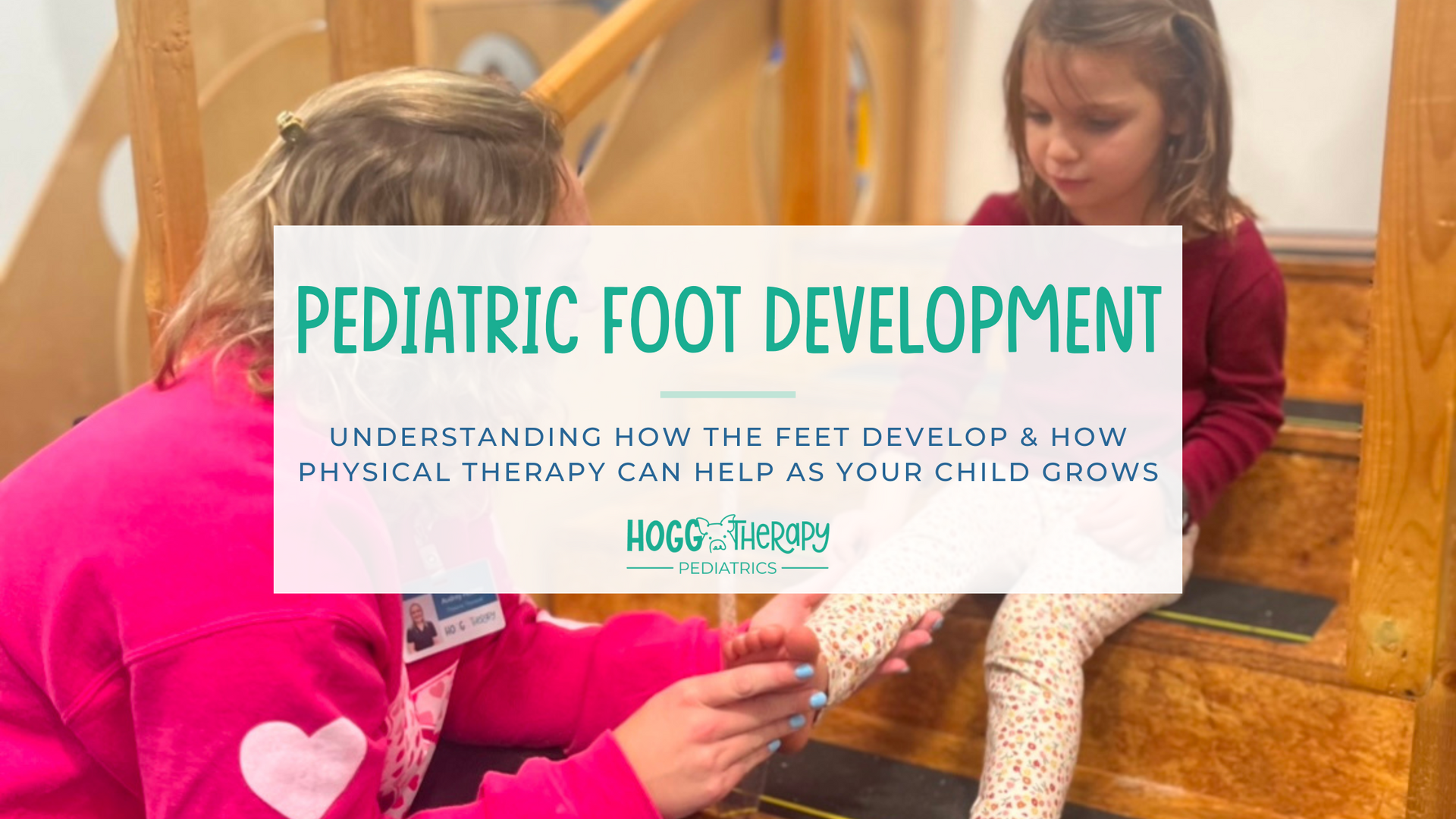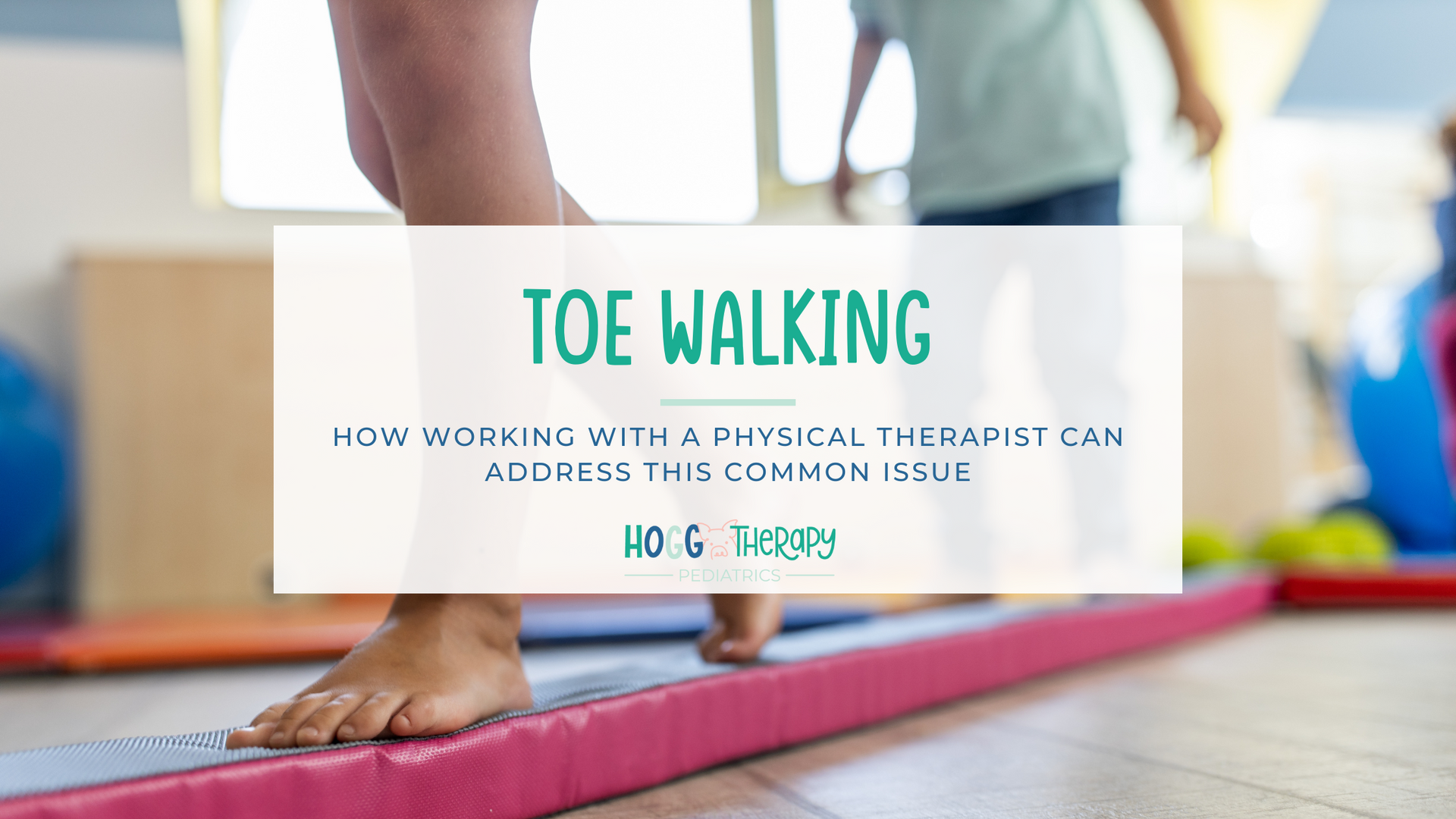Stuck Inside: Play Ideas for Indoor Fun
Rachel Dean, OTR/L
Like many other therapists, I always encourage my clients and families to spend as much time outdoors as possible. Being outside is great for developing safety awareness, motor skills, cognitive skills, and language development. However, we all know the weather can be unpredictable in the winter, and your kids may not be able to spend as much time outdoors. To help during the winter months, we’ve created a list of ideas you could complete in the safety of your warm home that will still provide your child with opportunities to develop all of these skills!
Sensory Bins
Sensory bins are great opportunities for your child to engage in sensory input as they provide tactile (touch), visual, and auditory input. Some things you could include as the base of the sensory bin are water beads, dry rice/noodles/beans, pom poms, cotton balls, or shredded paper. To make this activity more interactive, you could add tongs, cups, utensils, or strainers. Using tongs and utensils are a great way to work on fine motor skills with your child while also having fun!
Obstacle Courses
Making obstacle courses can be great for developing core strength, hand-eye coordination, hand strength, sensory input, and sequencing skills for a multi-step process. Some great things you could include in your obstacle course are couch cushions to jump on, hula hoops to jump through, painters tape on the floor as a “balance beam,” chairs to crawl under, or a laundry basket filled with clothes to push for “heavy work.” Letting your child contribute to the obstacle course is a great way to get them involved and working on their cognitive skills.
Science Experiments
Completing a science experiment is a great way to develop cognitive skills. These skills include cause-and-effect understanding, safety awareness, problem solving, answering questions, auditory/visual processing, and using reasoning skills. Not to mention, science experiments usually produce a fun and exciting outcome! Check out this list of science experiments for fun ideas. Some of my favorites on this list include making “oobleck” or a lava lamp for some additional sensory input.
Cooking
Letting your child assist with cooking is another great way to encourage engagement and participation from your child. Cooking allows your child to learn safety awareness, sequencing skills, and practice fine motor skills. Having your child assist with mixing, pouring, molding, and opening containers lets your child process simple directions, while also increasing their hand strength and dexterity. Click this link for some simple cookie recipes.
Homemade Play-Doh
As an occupational therapist, Play-Doh is one of my all time favorite therapy tools. Play-Doh is great for sensory input, working on fine motor skills, and increasing hand strength. Making your own Play-Doh allows your child to sequence steps, follow simple instructions, and use their creativity to add colors or textures to their Play-Doh. After you’re done making it, use items like utensils, tongs, cookie cutters, and other toys with the Play-Doh to make it more interactive! Find a recipe for homemade Play-Doh here.
Scavenger Hunts
Scavenger hunts are a great way to work on memory, color/number/letter recognition, processing skills, and gross motor skills when moving around the house. Have your child find something that starts with all the letters from A-Z, find objects that have certain colors or patterns, or find a certain number of objects. Click this link to find more ideas for an indoor scavenger hunt!
All of these activities are great ways to promote developmental skills for your child while also allowing them to have fun indoors. These ideas can promote increased attention, following directions, coordination, fine motor skills, cognitive skills, and language skills. We hope you give them a try!





















